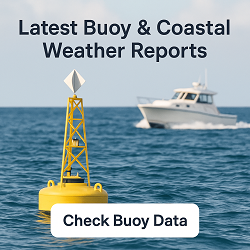Londonderry, NH Weather Forecast and Current Conditions (03053)
Current Conditions From Nearby Local Station

Feels Like 54°F
at
Current Conditions From Nearby Local Station

Feels Like 54°F
at
Point Forecast at a Glance







This Date in Weather History
1896 - A hurricane formed on September 22 and lasted until September 30. It formed directly over the Lesser Antilles and hit Cuba, Florida, Georgia, South and North Carolina, Virginia, Washington D.C., and Pennsylvania. Its maximum sustained winds were at 130 mph. The heaviest rainfall deposited in association with the storm was 19.96 inches at Glennville, Georgia. This hurricane was responsible for an estimated 130 deaths and $1.5 million in damage.
More on this and other weather history
Londonderry 7 Day Weather Forecast Details
Tuesday Sep 30

Day: Mostly sunny. High near 76, with temperatures falling to around 70 in the afternoon. North wind around 5 mph.

Night: Mostly clear, with a low around 47. Northeast wind around 5 mph.
Wednesday Oct 1

Day: Sunny, with a high near 63. North wind 5 to 10 mph.

Night: Mostly clear, with a low around 41. North wind around 5 mph.
Thursday Oct 2

Day: Sunny, with a high near 61.

Night: Mostly clear, with a low around 40.
Friday Oct 3

Day: Sunny, with a high near 71.

Night: Clear, with a low around 46.
Saturday Oct 4

Day: Sunny, with a high near 77.

Night: Mostly clear, with a low around 51.
Sunday Oct 5

Day: Sunny, with a high near 80.

Night: Mostly clear, with a low around 53.
Monday Oct 6

Day: Sunny, with a high near 76.
Sun & Moon Monthly
Sunrise 6:41 AM
Sunset 6:32 PM
Last Light 7:00 PM
Moonset 11:59 PM

Contiguous United States Extremes
Mon's High Temperature
101 at 16 Miles Southwest Of Tecopa, CA
Mon's Low Temperature
23 at 32 Miles West-southwest Of Bynum, MT
Weather Folklore
Look for foam on the river before a rain.
Current subscribers - login to your ClearSky account
About Londonderry, New Hampshire
Londonderry is a town in western Rockingham County, New Hampshire, United States. It sits between Manchester and Derry, the largest and fourth-largest communities in the state. The population was 25,826 at the 2020 census. Londonderry is known for its apple orchards and is home to the headquarters of Stonyfield Farm and part of Manchester–Boston Regional Airport.
The more densely settled portion of town, where 11,645 people lived at the 2020 census, is defined as the Londonderry census-designated place (CDP) and roughly occupies the southeastern and southern parts of town, around New Hampshire Route 102.
Content from Wikipedia, licensed under CC BY-SA 3.0.
How We Provide Better Local Weather
Current conditions: We use the nearest available station to your location - including professional MESONET/MADIS and local weather stations - often miles closer than regional airports.
Forecasts: National Weather Service point forecasts predict for your specific area, not broad regional zones, making them far more relevant to your location.

